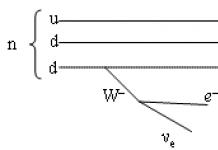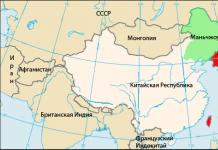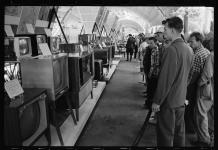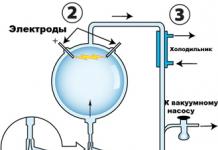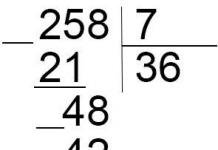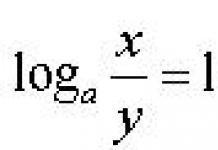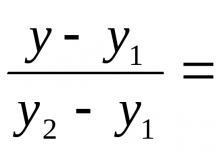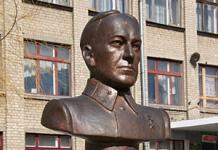The ancient Greek physicist, mathematician and engineer Archimedes made many geometric discoveries, laid the foundations of hydrostatics and mechanics, created inventions that served as a starting point for the further development of science. Legends about Archimedes were created during his lifetime. The scientist spent several years in Alexandria, where he met and became friends with many other great scientists of his time.
The biography of Archimedes is known from the works of Titus, Polybius, Livy, Vitruvius and other authors who lived later than the scientist himself. It is difficult to assess the degree of reliability of these data. It is known that Archimedes was born in the Greek colony of Syracuse, located on the island of Sicily. His father, presumably, was the astronomer and mathematician Phidias. also claimed that the scientist was a close relative of the kind and skillful ruler of Syracuse Hieron II.
Probably, Archimedes spent his childhood in Syracuse, and at a young age went to Alexandria of Egypt to get an education. For several centuries this city was the cultural and scientific center of the civilized Ancient World. The scientist, presumably, received his primary education from his father. After living for several years in Alexandria, Archimedes returned to Syracuse and lived there until the end of his life.
Engineering
The scientist was actively developing mechanical structures. He presented a detailed theory of the lever and effectively used this theory in practice, although the invention itself was known directly before him. Including, based on knowledge in this area, he made a number of block-link mechanisms in the port of Syracuse. These attachments made it easier to lift and move heavy loads, allowing you to speed up and optimize port operations. And the "Archimedes screw", designed to scoop out water, is still used in Egypt.
 Archimedes' inventions: Archimedes screw
Archimedes' inventions: Archimedes screw The theoretical research of the scientist in the field of mechanics is of great importance. Based on the proof of the law of leverage, he began to write the work "On the balance of plane figures." The proof is based on the axiom that on equal shoulders, equal bodies will balance out of necessity. The same principle of constructing the book - starting with the proof of his own law - Archimedes observed when writing the work "On the Swimming of Bodies." This book begins with a description of the well-known Archimedes' law.
Mathematics and physics
Discoveries in the field of mathematics were a real passion of the scientist. According to Plutarch, Archimedes forgot about food and personal care when he was on the verge of another invention in this area. The main direction of his mathematical research was the problems of mathematical analysis.

Even before Archimedes, formulas were invented for calculating the areas of a circle and polygons, the volumes of a pyramid, a cone and a prism. But the scientist's experience allowed him to develop general methods for calculating volumes and areas. To this end, he improved the method of exhaustion invented by Eudoxus of Cnidus, and brought the ability to apply it to a virtuoso level. Archimedes did not become the creator of the theory of integral calculus, but his work later became the basis for this theory.

Also, the mathematician laid the foundations of differential calculus. From a geometric point of view, he studied the possibility of determining the tangent to a curved line, from a physical point of view - the speed of a body at any time. The scientist investigated a flat curve known as the Archimedean spiral. He found the first generalized way to find tangent lines to hyperbola, parabola, and ellipse. Only in the seventeenth century, scientists were able to fully understand and reveal all the ideas of Archimedes, which have come down to those times in his surviving works. The scientist often refused to describe inventions in books, which is why not every formula he wrote has survived to this day.
 Archimedes' inventions: "solar" mirrors
Archimedes' inventions: "solar" mirrors The scientist considered the invention of formulas for calculating the surface area and volume of a sphere to be a worthy discovery. If in the previous of the described cases Archimedes refined and improved other people's theories, or created fast calculation methods as an alternative to the already existing formulas, then in the case of determining the volume and surface of a sphere, he was the first. Before him, not a single scientist has coped with this task. Therefore, the mathematician asked to knock out a ball inscribed in a cylinder on his gravestone.
The discovery of a scientist in the field of physics was a statement that is known as Archimedes' law. He determined that a buoyant force exerts pressure on any body immersed in a liquid. It is directed upward, and in magnitude is equal to the weight of the liquid, which was displaced when the body was placed in the liquid, regardless of what the density of this liquid is.

There is a legend associated with this discovery. Once, the scientist was allegedly approached by Hieron II, who doubted that the weight of the crown made for him corresponded to the weight of the gold that was provided for its creation. Archimedes made two bars of the same weight as the crown: silver and gold. Then, in turn, he placed these ingots in a vessel with water and noted how much its level had risen. Then the scientist put the crown in the vessel and found that the water did not rise to the level to which it rose when each of the ingots was placed in the vessel. Thus, it was discovered that the master had kept some of the gold for himself.

There is a myth that a bathtub helped Archimedes make a key discovery in physics. While swimming, the scientist allegedly lifted his leg slightly in the water, discovered that it weighs less in the water, and experienced an inspiration. A similar situation took place, however, with its help, the scientist discovered not the Archimedes law, but the law of the specific gravity of metals.
Astronomy
Archimedes became the inventor of the first planetarium. When this device moves, observe:
- rising of the moon and sun;
- movement of five planets;
- the disappearance of the Moon and the Sun beyond the horizon;
- phases and eclipses of the moon.
 Archimedes' inventions: planetarium
Archimedes' inventions: planetarium The scientist also tried to create formulas for calculating the distances to celestial bodies. Modern researchers suggest that Archimedes considered the Earth to be the center of the world. He believed that Venus, Mars and Mercury revolve around the Sun, and this entire system revolves around the Earth.
Personal life
Much less is known about the scientist's personal life than about his science. His contemporaries also composed numerous legends about the gifted mathematician, physics and engineer. Legend says that one day Hieron II decided to present a multi-deck ship to Ptolemy, the king of Egypt. It was decided to name the watercraft "Syracuse", but it was not possible to launch it.

In this situation, the ruler again turned to Archimedes. From several blocks, he built a system with which the descent of a heavy vessel was possible with the help of one movement of his hand. According to legend, during this movement, Archimedes said:
"Give me a foothold, and I will turn the world."
Death
In 212 BC, during the Second Punic War, Syracuse was besieged by the Romans. Archimedes actively used his engineering knowledge to help his people triumph. So, he designed throwing machines with which the warriors of Syracuse threw heavy stones at opponents. When the Romans rushed to the walls of the city, hoping that there they would not come under fire, another invention of Archimedes - light throwing devices of close action - helped the Greeks to throw cannonballs at them.
 Archimedes' Inventions: The Catapult
Archimedes' Inventions: The Catapult The scientist helped his compatriots in naval battles. The cranes developed by him captured enemy ships with iron hooks, slightly lifted them, and then abruptly threw them back. Because of this, the ships capsized and crashed. For a long time, these cranes were considered something of a legend, but in 2005 a group of researchers proved the efficiency of such devices, reconstructing them according to the surviving descriptions.
 Archimedes' inventions: lifting machine
Archimedes' inventions: lifting machine Thanks to the efforts of Archimedes, the Romans' hope to storm the city failed. Then they decided to go over to the siege. In the fall of 212 BC, the colony was taken by the Romans as a result of treason. Archimedes was killed during this incident. According to one version, he was hacked to death by a Roman soldier, whom the scientist attacked for stepping on his drawing.

Other researchers claim that Archimedes was killed in his laboratory. The scientist was allegedly so keen on research that he refused to immediately follow the Roman soldier, who was ordered to escort Archimedes to the commander. He, in anger, pierced the old man with his sword.

There are also variations of this story, but they agree that the ancient Roman politician and military leader Marcellus was extremely upset by the death of the scientist and, having united both with the citizens of Syracuse and with his own subjects, arranged a magnificent funeral for Archimedes. Cicero, who discovered the destroyed grave of the scientist 137 years after his death, saw on it a ball inscribed in a cylinder.
Essays
- The quadrature of the parabola
- About ball and cylinder
- About spirals
- About conoids and spheroids
- On the balance of plane figures
- Message to Eratosthenes about the method
- About floating bodies
- Circle measurement
- Psammit
- Stomachion
- Archimedes' problem on bulls
- Treatise on the construction of a corporeal figure with fourteen bases near a ball
- Book of lemmas
- A book on constructing a circle divided into seven equal parts
- A book about touching circles
In general, we have outlined the life of an inventor, his scientific and inventive achievements. In this article we will try to list the inventions of Archimedes with a more detailed explanation.
We present a list of inventions of Archimedes for quick navigation:
Improving leverage
“Be at my disposal another land on which
I could get up, I would move ours. "
(c) Archimedes
Archimedes, of course, was not the one who invented the lever, since it is a fairly simple device, but he was the one who theoretically described the principles of its operation and, understanding these principles, was able to develop and improve it. He also explained the principle of multistage transmission.
In his work "On the equilibrium of planes or centers of gravity of planes" Archimedes writes the following:
Bodies of the same weight, which are equidistant from the center, will be in balance, but if the distance for one of them is changed, then the balance will be disturbed in favor of the body that is at a more distant distance from the center.
If you take two bodies of the same weight, which are equidistant from the center, and add additional weight to one of them, then the balance will be disturbed in favor of more weight.

Leverage principle and mathematical relationship

Worm-gear

Many historians believe that Archimedes also managed to invent the worm gear. Considering that Archimedes invented the water-raising propeller, there is little doubt that he could have guessed before this invention. Later he described a screw with a special half-notch, which slid along the screw along its thread. But for the era of Heron, this mechanism seems outdated, since in his time screws and nuts already existed. It is possible that Heron described exactly the invention of Archimedes, having read some of his works that have not reached us.

Connecting pulley

A pulley is a wheel along which a rope or chain can be installed. A person pulling from one end of the rope can lift the weight at the other end of the rope. The pulley wheel acts as a fulcrum, reducing the force required to lift a load. Archimedes invented a whole system of pulleys to lift and move loads.

The pulley system can be further complicated to obtain greater strength gains.

The sequential complication of the pulley system and calculations for them show that it is possible to achieve a decrease in the required force by a factor of 4.
King Chieron, hearing that Archimedes could move any heavy objects from the spot, did not believe him and asked to prove it. The timing was right, because in Syracuse there was just a problem with a huge ship (the ship was named after the city), which could not be taken out of the harbor. It should be noted that the ship was stunningly beautiful and reached 55 meters in length. According to Plutarch, Archimedes managed to get the ship out of Syracuse harbor using a complex system of levers and pulleys.

Archimedes screw
"Eureka!"
(c) Archimedes

Also, this invention is sometimes called "Archimedes' snail" or water screw. The device is designed for raising water, for example, for irrigating fields. The Archimedes screw is a spiral that rotated inside the pipe, transferring water upward on the helical blades. The spiral rotation was set by rotating a special handle from above. The handle itself could be rotated by humans, cattle or horses, and in later times a water wheel or a windmill could be used. In addition to water, granular materials such as ash or sand can be transported to the top with a screw.

Perhaps this is one of the oldest known devices for raising water. The screw is still used in small power plants and even on farms. Since 1980, the state of Texas in the United States has used eight Archimedes propellers with a diameter of about 3.6 meters to deal with storm runoff. The propeller is powered by a 551 kilowatt engine and can pump up to 500 thousand liters of water per minute.

Archimedes' screw used in Texas in the USA
The main advantage of the Archimedes screw is that the ingress of debris into the mechanism does not lead to disruptions in the operation of the device. For example, with the help of the screw, you can even lift the fish along with the water, while the screw will continue to work.
Detailed explanation of how the Archimedes screw works:
A huge Archimedes screw installed at a hydroelectric power station:
And in this video, the Archimedes screw was made from Lego:
Iron hand or claw of Archimedes

The Claw of Archimedes was a weapon that the inventor came up with during the siege of his hometown of Syracuse. The city had to be defended from the fleet of the Roman Empire, so it was necessary to develop effective methods for sinking the fleet directly from the fortress walls.
The exact design of the device is not known to us, but we roughly understand the principles on which it was based. If you read carefully about the invention of pulleys and levers, then it will not be difficult to understand the principle of the claw.

The principle of operation of the claw of Archimedes
Archimedes' claw was a system of pulleys, ropes and beams. At one end of the rope was a hook that would be thrown onto the enemy ship and hooked under the belly of the ship. On the other side of the rope, behind the wall, there were already bulls and people ready to pull the rope. As a result, multi-ton ships were turned over or thrown on stones, scattering the enemy's fleet and crew around the walls.

The pitiful Roman fleet is nothing against the mind of Archimedes!
In our time, two whole groups of people tried to build the claw of Archimedes and sink the ship. We suggest looking at both attempts and making sure that the device was functional.
Catapults, ballistae and scorpions

A painting depicting the siege of Syracuse.
During the siege of Syracuse, Archimedes built artillery that could cover a range of ranges. While the attacking ships were at a great distance, he fired from catapults and ballistae, pelting enemy ships with huge stones and logs. If the ships approached the fortress walls for an assault, they were met by a whole stream of arrows from "scorpions" (small catapults throwing steel darts). By the way, it is worth noting that it was Archimedes who suggested making the loopholes, which was an innovation in the fortification of that time. From small openings, archers successfully fired at the advancing Romans. Thus, the Romans did not succeed in approaching the walls of Syracuse, and if they did, they suffered huge losses.

True, from a historical point of view, Archimedes was not the one who first invented all these structures, but he clearly made his own modifications to them (for example, improved accuracy) and successfully used them for defense.
Fire mirrors

Well, this invention for its time definitely strikes any fantasy. Archimedes figured out how to burn enemy ships with the sun. In some articles, this invention is even called "death rays". How was it organized?

The Romans set up near the city with their 60 quinquerems. Archimedes was educated enough optically to make convex mirrors. Presumably, this was not one mirror, but a whole system of mirrors heading to one place to focus the rays. The system most likely consisted of 24 mirrors, which were combined into one frame and rotated with hinges, changing the angles of rotation.

How mirrors work
In fact, it is not completely clear what exactly Archimedes used mirrors for. It is likely that he did not burn the fleet with them, but only blinded the archers on the ships. There is also a version according to which special shells were thrown at the ships with the help of catapults, which were then set on fire with the help of mirrors, so one might think that these were mirrors burning ships. And there is also a version that mirrors were used only for aiming catapults.
In 1973, the Greek scientist Ionnis Saccas became interested in the possibility of burning a fleet using mirrors, so he set up an experiment. 60 Greek sailors held 70 mirrors, each of which was copper-plated and measured 1.5 meters by 1 meter. The mirrors were directed to a plywood model of the ship, 50 meters away. The mirrors quietly set fire to the model, which proved the practical possibility of setting fire to the fleet with the help of mirrors.


In 2005, the Mythbusters repeated the experience, albeit in a slightly different way. They used convex mirrors in the amount of 500 pieces and with a smaller area. They managed to burn the sail on the model only after 1 hour, so their experiment showed that burning a fleet with mirrors is not very convincing.
Odometer

Archimedes odometer
Aristotle creates an odometer around 330 BC. This device made it possible to measure the distance traveled, which was indispensable when creating maps or when building large structures.

The odometer principle is simple. The wheels rotate and drive two gears. After certain distances, the gears release a small ball, which falls into a special container. At the end of the path, you can count the balls and find out which path you have done.


As a result, the Romans took Syracuse with bribery. The traitors opened the gates for them, and they killed Archimedes. Cicero later described the return of the Romans to Rome, saying that among the spoils of war there was also a beautiful mechanical planetarium invented by Archimedes. The planetarium showed the movement of five planets and an eclipse. This reconstruction showed the daily movement of stars around the Earth, eclipses of the Sun and Moon, and their movement along the ecliptic.
Archimedes was born in 287 BC, in Syracuse. A relative of the future scientist was Hieron, who later became the ruler of Syracuse Hieron II. Archimedes' father Phidias, an outstanding astronomer and mathematician, was at the court. For this reason, the boy received a decent education.
Realizing that he lacked theoretical knowledge, the young man soon went to study in Alexandria, where the brightest minds of antiquity worked at that time.
Archimedes spent most of his time in the Library of Alexandria. There he studied the works of Democritus and Eudoxus. During his training, Archimedes became close to Eratosthenes and Conon. Friendship has been preserved for many years.
Works and achievements
After completing his studies, Archimedes returned to his native Syracuse and took up the post of astronomer at the court of Hieron II. But not only the stars attracted his attention.
The post of astronomer was not onerous. Archimedes had the opportunity to study mechanics, physics and mathematics. At this time, the researcher applied the principle of a lever to solve several problems in geometry.
The conclusions were detailed in the work “On the equilibrium of plane figures”.
A little later, Archimedes wrote an essay "On the measurement of a circle." He managed to calculate the ratio of the diameter of a circle to its length.
Studying a short biography of Archimedes, you should know that he also paid attention to geometric optics. He carried out several interesting experiments on the refraction of light. The theorem has survived to this day. It proves that against the background of the reflection of a ray of light from a mirror surface, the angle of incidence is equal to the angle of reflection.
Gifts of Syracuse
Archimedes made many useful discoveries. All of them were dedicated to the hometown of the scientist. Archimedes actively developed the idea of using leverage. In the Syracuse port, he managed to create a whole system of lever-block mechanisms that accelerate the process of transporting heavy, oversized cargo.
With the help of an Archimedean screw, or auger, it became possible to extract water from low-lying reservoirs. Thanks to this, the irrigation canals began to receive moisture without interruption.
The main service to Syracuse was provided by Archimedes in 212. The scientist took an active part in the defense of Syracuse, which were besieged by Roman troops. Archimedes managed to create several powerful throwing machines. When the Romans burst into the city, many of them fell under the blows of stones fired from these machines.
Archimedean cranes easily overturned the ships of the Romans. This led to the fact that the Roman soldiers abandoned the storming of the city and began a long siege.
Unfortunately, in the end, the city was taken.
Death of a scientist
The story of the death of Archimedes was transmitted by John Tsetz, Plutarch, Diodorus of Siculus and Titus Livy. The details of the death of the great scientist vary. One thing in common is that Archimedes was killed by a certain Roman soldier. According to one version, the Roman did not wait for Archimedes to complete the drawing, and for refusing to follow the consul, he stabbed him with a sword.
Another version says that the scientist was killed on the way to Marcellus. The Roman soldiers seemed suspicious of the instruments for measuring the Sun, which Archimedes carried in his hands.
Consul Marcellus, upon learning of the death of the scientist, was upset. Archimedes' body was buried with great honors, and "great respect" was shown to his relatives.
Other biography options
- Once Archimedes exclaimed, "Give me a fulcrum and I will move the Earth!" In the eyes of his contemporaries, the outstanding scientist was practically a demigod.
- According to legend, the Syracusans managed to burn several Roman ships. This was done using huge mirrors, the amazing properties of which were also discovered by Archimedes.
Biography score
New feature! The average rating this biography received. Show rating
Date of birth: 287 BC e.
Died: 212 BC e.
Place of birth: Syracuse city, Greece
Archimedes- a famous ancient Greek scientist. Archimedes famous for his works in physics, mathematics and mechanics. The scientist is the author of numerous discoveries in geometry, the founder of hydrostatics and mechanics. Archimedes is also known as an inventor.
The ancient Greek scientist was born in Syracuse. The father of the future inventor Phidias was a mathematician and astronomer. His father's hobby was passed on to Archimedes and over time, this hobby for the exact sciences, became the work of the entire life of the ancient scientist.
Alexandria became for Archimedes the city where he could get an education. In ancient times, this city was considered a cultural and scientific center. In Alexandria, Archimedes was able to meet such famous scientists as Eratsfen and Konon.
At that time, about 700 thousand manuscripts were collected in the Alexandrian library. Archimedes spent a lot of time in the library and got acquainted with the works of geometers. The knowledge acquired in Alexandria greatly helped the scientist in his future work.
After graduation, Archimedes returned to his hometown. He was greeted there with open arms, the scientist could not think about how to make a living, was engaged in discoveries and wrote scientific works.
The sources of his activities during this period have practically not survived in history. Legends about Archimedes were already composed during his lifetime, and after many centuries, confusion with facts from his life only intensified.
The so-called Archimedes screw or auger made it possible for the inhabitants of the city to extract more water from reservoirs. Thanks to this, the irrigation canals began to receive uninterrupted water, and the inhabitants of Syracuse did not have to worry about their harvest.
The main merit of Archimedes is his participation in the second Punic War, which was fought in 212 BC. He was then 75 years old, he was an active participant in the defense of the city and put his inventions into practice.
Archimedes created powerful stone throwing machines that stopped the Romans on the outskirts of the city. Cranes invented by Archimedes overturned enemy ships.
The Romans could not take the city, since the inventions of Archimedes stood on the defense. Then the legionnaires went over to a long siege. There is a legend that the Syracusans were able to burn several enemy ships using large mirrors.
This legend has no confirmation, and most likely the inhabitants of Syracuse burned ships using throwing machines.
The Romans still managed to capture the city, despite the efforts of Archimedes, as a result of betrayal. The scientist himself was killed during the assault. There is also no reliable information about this, since there are several versions of the story of his death left in history.
Byzantine Ioann Tsets wrote that during the assault Archimedes was busy drawing on the sand. The legionary stepped on this blueprint, and the scientist lunged at the soldier with a cry. At that moment he was killed.
According to Plutarch's version, the Roman commander Marcellus sent his soldier after Archimedes. But Archimedes did not follow the legionnaire, and he stabbed him in anger.
According to Diodorus Siculus, the legionnaire tried to drag Archimedes to the commander, the scientist began to resist and threatened to start his machines. Since the Romans were afraid of these inventions, the soldier did not wait and killed the inventor.
The commander Marcellus gave an honorable burial for Archimedes, and the soldier who stabbed Archimedes was beheaded.
There is another version according to which Archimedes met with Marcellus in order to show his inventions. The legionnaires mistook the glitter of the glass and metal parts of the machine for the glitter of gold and killed Archimedes in the hope of getting the booty.
The dilapidated tomb of Archimedes was found by Cicero in 75 BC.
Archimedes' achievements:
Archimedes laid the foundations of the exact sciences
Solved problems related to mathematical analysis
Applied a new method for solving cubic equations.
Calculated all semiregular polyhedra
I learned to determine the density of bodies by immersing them in a liquid.
Improved leverage system
Designed the Archimedes screw
He wrote the essay "Psammit", where he opened up the topic of the heliocentric system of the universe.
Dates from the biography of Archimedes:
287 BC e. - born in Syracuse
212 BC e. - died during the siege of Syracuse at the hands of a Roman legionary
Interesting Archimedes Facts:
The Roman general Marcellus during the siege of Syracuse wanted to end the war against Archimedes
While taking a bath, Archimedes saw that his body was heavier than water and the brilliant idea of determining the density of bodies came to him
Created a throwing machine
Archimedes would be a respected person in his homeland, and the Romans, who had never encountered such a weapon before, were afraid of his military vehicles.
After Archimedes, there were no students left, since he did not want to create his own school and raise new scientists
Archimedes' screw was invented by him in his youth and was used to fill irrigation canals. Today these screws are used in various fields.
Archimedes is considered one of the world's best inventors and mathematicians.
Contemporaries considered the scientist crazy. He demonstrated his skills in front of the ruler of Syracuse, pulling triremes ashore using a block system
According to some legends, during the storming of Syracuse, a detachment of legionnaires was sent for Archimedes. His death was an absurd accident.
Archimedes' calculations many thousands of years later were repeated by Newton and Leibniz
Created a planetarium
Heraclides wrote a biography of Archimedes, but it is lost, and today there are no reliable facts about the life of the great scientist
Mathematics was Archimedes' best friend
Some scholars call Archimedes the inventor of the cannon. Plutarch, covering the storming of Syracuse, wrote that during the storming of the city, the legionnaires were fired upon from a device with a long pipe, from which cannonballs flew
The legend of the mirrors, with the help of which the inhabitants of the besieged city destroyed Roman ships, has been refuted many times. But historians say that mirrors were used to aim machines throwing stones, which fired at the Roman fleet.
If ... Oh, if the great states of antiquity paid a little more attention to their glorious inventors - at least in the same way as the current governments do not skimp on funding high-tech military programs, then - who knows what language we would now speak with you and in what country did you live in? What would happen if Leonardo da Vinci or Nikola Tesla had the opportunity to expand their talents to the full extent?
We already wrote about da Vinci. It's time to pay tribute to yet another, perhaps the very first technical genius of mankind. The great mathematician, physicist, engineer and astronomer, underestimated during his lifetime and accidentally killed by the hand of an illiterate soldier - he could accelerate the scientific and technological revolution by almost two thousand years, if ...
Who are you, Mr. Archimedes?
Archimedes (artist Domenico Fetti, 17th century).
Any stories about great people usually begin with their biography. Alas, in the case of Archimedes, we will have to be content with only a set of unconfirmed facts. There are many legends about the life of this scientist, but there is very little reliable information.
The birthplace of the inventor was Sicily, the city of Syracuse. He spent most of his life there. The date of his birth - 287 BC - is established on the basis of the testimony of the Byzantine historian John Price (12th century), who wrote that Archimedes lived for 75 years and died in 212 BC.
In his writings, the inventor mentioned that his father was the astronomer and mathematician Phidias, who came from a noble Syracuse family. Apparently, at a young age, the boy was sent to study in Alexandria - the largest cultural center of that time. Later, he actively communicated with mathematicians of the Alexandrian school (for example, with Erastofen), and this suggests that Archimedes used the works of the Alexandrian Euclid as "textbooks". The topics of his further research also coincided with the "Euclidean science" and significantly developed it - this is, first of all, the theory of numbers, as well as planimetry and geometry.
After studying in Alexandria, Archimedes returned home and got a job at the court of his distant relative, the Syracuse tyrant Hero II. There are many legends about how Archimedes performed the most cunning tasks of Heron, but in reality the ruler most likely did not attach much practical importance to his research and patronized the outstanding scientist only because his presence in Syracuse significantly increased the cultural status of the city.
Being "under the wing" of an enlightened monarch for most of his life, the inventor could work in peace - and worked, and so fruitfully that today the word "Archimedes" is unknown only to those who live in the forest, pray to the wheel and faint when the form of an airplane.
Syracuse is one of the most influential and beautiful cities in the antique Mediterranean. It was founded in the 8th century BC under the name Shirako ("swamp", because there was really a swamp near the city). Hero II wisely ruled Syracuse for 50 years: he avoided major wars, developed jurisprudence, science and art. His successor, the young Jerome, ascended the throne in 215 and almost immediately brought the city to ruin by falling out with Rome. Syracuse fell due to the fact that some of the townspeople decided to negotiate the terms of a peace treaty and opened a small door in the wall for the Romans, but they rushed in and quickly suppressed the resistance.
The troops of the Roman consul Marcellus laid siege to Syracuse for a very long time (about 8 months). The reason for the delay was allegedly the fact that the great scientist, facing the threat of invasion, switched from pure mathematics to mechanics and began to create amazing combat devices to defend his hometown. Moreover, according to some testimonies, Archimedes personally directed the defense of the city and disposed of its technical resources.
The Romans were not fools. Assessing the defensive innovations of the Greeks, Marcellus ordered his soldiers not to touch the ingenious engineer during the capture of the city, apparently planning to lure him into his service. It is not hard to imagine what kind of military mechanisms Archimedes could have invented, working for the practical and cruel Romans.
However, history ordered otherwise. According to legend, one of the legionnaires found the scientist in the garden of his house, when he studied drawings in the sand, not paying any attention to the street fighting. Either the Roman did not recognize this Greek, or he deliberately violated the command of the commander (they say that Archimedes told the soldier not to touch his drawings - "circles", but in what terms he did this remains unclear) - in any case, the greatest mind of his time was simply hacked to death on the spot.

Death of Archimedes. An engraving from an 18th century Italian book.
Plutarch (45-120) reports that, according to the will of Archimedes, a ball, enclosed in a cylinder, was installed on his grave, indicating that the ratio of their volumes is 2/3. In his work "On a sphere and a cylinder" Archimedes proved the same multiplicity of the ratio of the area of the surfaces of these two figures.
Word and deed
It is enough just to glance at the “know-how” of Archimedes in order to understand how much this person has outrun his time and what our world could become if high technologies were assimilated in antiquity as quickly as today. Archimedes majored in mathematics and geometry, two of the most important sciences that underlie technical progress. The revolutionary nature of his research is evidenced by the fact that historians consider Archimedes one of the three greatest mathematicians of mankind (the other two are Newton and Gauss).
In terms of innovation, this Greek was head and shoulders above all European mathematicians up to the Renaissance. In a society where a completely creepy numbering system was used, and in a language where the word "myriad" (ten thousand) was synonymous with "infinity", he developed a clear science of numbers and "counted" them up to 10 64.
Archimedes laid the foundations of integral calculus and the theory of ultra-small numbers. He proved that the ratio of the circumference of a circle to its diameter is equal to the ratio of the area of a circle to the square of its radius. The scientist, of course, did not call this ratio "pi number", but quite accurately determined its value in the range from 3 + 10/71 (about 3.1408) to 3 + 1/7 (about 3.1429).
Only a few treatises of Archimedes have survived to our time. Most of them died in two fires at the Library of Alexandria - only a few translations into Arabic and Latin have survived. For example, in the work "On the balance of planes" the author investigated the centers of gravity of various figures. There is a legend according to which Heron asked Archimedes to clearly illustrate the "effect" of the lever, known for his famous phrase "Give me a fulcrum and I will turn the whole world!" (Plutarch quotes it differently: "If there was another Earth, I would stand on it and move this one").
The inventor ordered a large ship to be pulled ashore and filled with cargo, after which he stood near the pulley block (reel block) and began to pull the rope tied to the ship without any visible effort. The latter, to the surprise of those present, “floated” on land, as if on water.
Other works are no less significant: "On conoids and spheroids", "On spirals", "Measuring a circle", "Square of a parabola", "Psammit" ("Calculus of grains of sand" - here the scientist proposed a way to find out the number of grains of sand contained in the volume of everything world, that is, he described the system of recording extra-large numbers).
Separately, it should be said about his work in the field of mechanics. Here he really was a pioneer, in many ways reminiscent of Leonardo da Vinci.
According to the testimony of Diodorus of Siculus, Roman slaves in Spain drained entire rivers using a device that Archimedes had developed during a visit to Egypt. It was the so-called "Archimedes screw" - a powerful and at the same time very simple screw pump. However, some evidence suggests that a similar device was invented 300 years earlier to irrigate the hanging gardens of Babylon (the so-called "Gardens of Babylon").

Archimedes allegedly invented a mosaic game - "stomachion" (it is necessary to make recognizable figures from flat bone pieces of different geometric shapes - a person, an animal, etc.). He is also credited with creating the odometer (a device that measures the distance traveled).
During the siege of Syracuse, Archimedes built many amazing devices, of which two of the most effective can be distinguished. The first is the “Archimedes' Paw”, a unique hoisting machine and a prototype of a modern crane. Outwardly, it looked like a lever protruding beyond the city wall and equipped with a counterweight. Polybius in his "World History" wrote that if a Roman ship tried to land near Syracuse, this "manipulator", under the control of a specially trained machinist, would grab his nose and turn it over (the weight of Roman triremes exceeded 200 tons, while in a penter it could reach all 500) , flooding the attackers.

The crane is also a weapon!
The Romans were shocked to see Archimedes' machines in action. Plutarch writes that sometimes the matter reached the point of absurdity: when they saw a rope or a log on the wall of Syracuse, the invincible Roman legionaries fled in panic, thinking that another hellish mechanism would be used against them now.
Similar machines knocked the siege ladders off the walls of the Romans, and Archimedes' long-range and incredibly accurate catapults fired stones at their ships. But even more surprising was the second "surprise" - the beam weapon.
Realizing the futility of attempts to take the city by storm, the Roman fleet (according to various sources, about 60 ships) anchored near the city. According to legend, Archimedes constructed a large mirror, or handed out small concave mirrors to the soldiers (historians do not have a single point of view - sometimes they even feature copper shields polished to a shine), with the help of which he "concentrated" the sunlight on the enemy's fleet and burned it to ashes.

Cicero wrote that after Syracuse was plundered, Marcellus took out two devices - "spheres", the creation of which is attributed to Archimedes. The first was a kind of planetarium, and the second simulated the movement of the stars in the sky, which implied the presence of a complex gear mechanism in it.
Until recently, this evidence was considered dubious, but in 1900, near the Greek island of Antikythera, at a depth of 43 meters, the remains of a ship were found, from which the remains of a device - an "advanced" system of bronze gears dating from 87 BC, were found. This proves that Archimedes could well have created a complex mechanism - a kind of "computer" of ancient times.

Antikythera is possibly the oldest gear mechanism in the world
Hyperboloid of engineer Archimedes
Could a cunning Greek really feed the fish in the sea near Syracuse with fried Romans? This myth has been tested several times - and with uneven results. The most interesting was the experiment of the Massachusetts Institute of Technology, carried out in 2005.
Ancient sources describe the construction of the Archimedean "hyperboloid" very contradictory - whether it was bronze shields, or a giant reflector. The researchers suggested that Archimedes could hardly have made a huge (and therefore very vulnerable) reflector, and chose the option with shields, replacing them with 127 mirrors measuring about 30 by 30 centimeters.
The experimenters did not aim to completely recreate the conditions for using the "hyperboloid". The model of the ship was made of solid oak, although more flammable types of wood, such as cypress, were used to make Roman ships. The ship's sides were dry, although in reality they were exposed to the waves. The distance to the target is 30 meters, but in fact it was much greater (at least - the flight distance of the arrow). In addition, the layout remained stationary, and the Roman ships moved slightly, even at anchor in Syracuse Bay.

Mirrors were brought to the ship and covered with curtains. There and then a problem arose - the "weapons" were on stands, and not in the hands of the Greek soldiers. The sight had to be constantly adjusted, since due to the movement of the Sun across the sky, the rays were shifted by 1.5 meters every 10 minutes. The clouds also did not facilitate the work - the power of the "laser" periodically dropped.
What came of it? "Weapon of Vengeance" worked for only 10 minutes, but the effect exceeded all expectations. Immediately after the mirrors were opened, the wood began to char, then smoke appeared and almost immediately behind it - a clot of bright flame. After 3 minutes, the fire was extinguished. A through hole appeared in the side of the ship.

The mobility of real targets, a long distance to them, poor reflective qualities of bronze - all this speaks against the legend of Archimedes. However, the inventor had many reflectors at his disposal (the number of soldiers with polished shields on the walls of the city numbered hundreds) and he was not limited in time. Archimedes really could have achieved the "laser" effect, but not in quality, but in quantity.
In the experiment, the mirrors were flat, which cannot be said about the shields of the Greeks. If the reflectors they used were concave, their "range" would have exceeded 30 meters.
Too little historical information has survived to recreate Archimedes' weapons as they really could be. It is reasonable to speak not about the refutation of the myth, but about the theoretical possibility of the "solar laser". The experiment showed that physics does not contradict history. This inspires optimism, therefore, the legend of the "death rays" of Archimedes can be considered conditionally true.
- Modern Syracuse has almost no traces of its former greatness. Tourists are often taken to the so-called "Tomb of Archimedes" in the Grotticelli necropolis. In fact, this Roman burial does not contain the remains of the famous scientist.
- The Palimpsest of Archimedes is a Christian book compiled in the 12th century from “pagan” parchments of the 10th century. For this, the old letters were washed off from them, and the church text was written on the received material. Fortunately, the palimpsest (from the Greek palin - again and psatio - I erase) was made poorly, so the old letters were visible in the light (or even better - under ultraviolet light). In 1906, it turned out that these were three previously unknown works of Archimedes.
- There is a legend about how King Heron instructed Archimedes to check if the jeweler had mixed silver into his golden crown. The integrity of the product could not be violated. Archimedes could not complete this task for a long time - the solution came by accident when he lay down in the bathroom and suddenly noticed the effect of displacing the liquid (he shouted: “Eureka!” - “Found it!” And ran out naked into the street). He realized that the volume of a body immersed in water is equal to the volume of the displaced water, and this helped him expose the deceiver.
- One of the large lunar craters (82 kilometers wide) was named after Archimedes.

* * *
Archimedes is the most suitable candidate for creating the image of an ancient inventor who designed steam tanks and flying machines hundreds of years before the birth of Christ (this genre is usually called "sandalpunk" - by analogy with "cyberpunk" or "dieselpunk", where the word "sandal" means sandalwood, as well as sandals worn by the ancient Greeks). By today's standards, the works of Archimedes are the level of secondary school. However, do not forget that they were made over 2000 years ago and were ahead of their time by at least the 17th century. Thanks to this, the hero of our article can rightfully be called one of the greatest geniuses of mankind.



